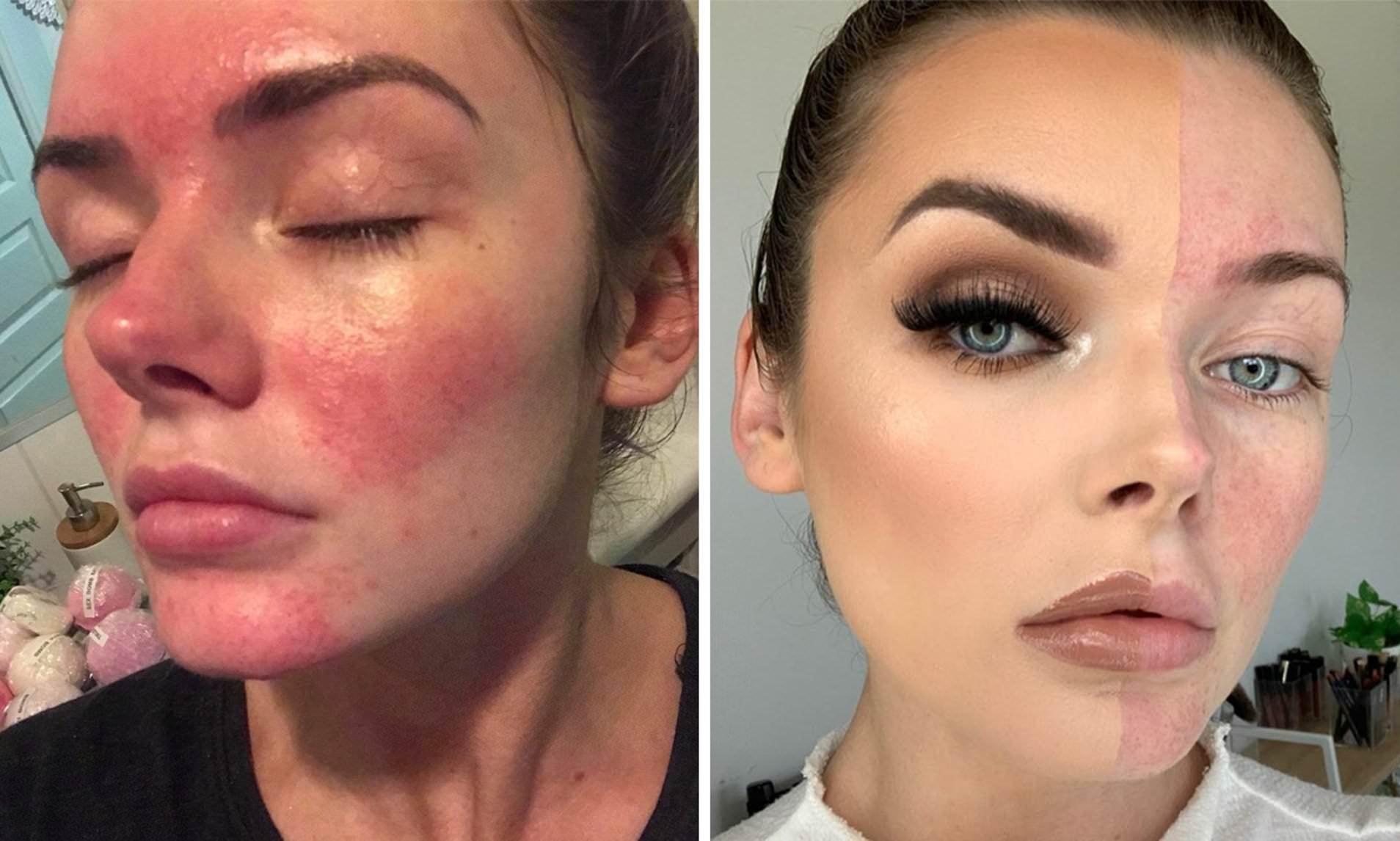Wearing makeup may feel a bit risky for someone dealing with sensitive rosacea-prone skin, but if the right products are used, makeup has the ability to safely disguise rosacea’s symptoms and can immediately boost the self-confidence of a rosacea patient. Here’s some tips to help you look and feel your best.
Keep it simple
The more ingredients and products you apply on your skin, the more likely that an ingredient or product irritates it. Therefore, opt for multifunctional cosmetics that serve more than one function. For example, a tint that can be used on the cheeks and the lips.
Make sure to patch test a new product before using it on your face to make sure it doesn’t react to it. If a product makes your skin burn, sting, or become irritated, avoid using it. Also, it’s best to avoid trying various new products simultaneously. Instead, try out one new product at a time to observe the effect it has on your skin before incorporating it into your regular makeup routine.
Don’t forget SPF
Sun exposure is a common trigger for rosacea flare ups, so it’s extremely important to protect your skin with sunscreen. When selecting a new product with sunscreen, make sure it delivers UVA/UVB protection with an SPF of 30 or higher, and is a physical rather than chemical SPF. Many foundations on the market include SPF, however, it’s not enough to replace sunscreen. Therefore, we recommend applying SunClear Natural SPF40 Sunscreen to the face under your makeup for extra sun protection.

Use a colour correcting primer
Some people find applying a neutralising, green-hued primer, before applying foundation can reduce redness from rosacea. On the colour wheel, green is the opposite of red, so it will help cancel out any redness on the face.
Look at the ingredients list
There are certain ingredients commonly found in makeup that can irritate the skin. Here are a few ingredients that have been found to trigger rosacea flare ups.
Gentle makeup
Because rosacea sufferers often have sensitive skin, it’s important to wear makeup that is easy to remove and won’t cause irritation from hard scrubbing. For this reason, we suggest using non-waterproof mascara and eyeliner if possible.
Remove makeup gently
Micellar water is usually the most gentle way to remove makeup. Look at the ingredients list and try to avoid makeup removers that contain alcohol or fragrance as they can further irritate rosacea-prone skin.
To blush or not to blush?
If you have rosacea, you may avoid wearing blush. You may be thinking, why would I want to add fuel to the fire? But with the right techniques and use of the right products, blush can actually become your friend. Here’s some helpful tips on how to apply blush to rosacea-prone skin.
Managing your rosacea

For long term treatment of rosacea, use these makeup tips in conjunction with an effective skincare regime specially designed to manage the symptoms of rosacea. Here’s a simple and effective routine for rosacea-prone skin.
Grahams Natural Rosacea Cream provides a low-irritant moisturising treatment and an emollient protective barrier. The cream is formulated as a complex ‘oil-in-water’ cream which excludes colour, fragrance or other known rosacea trigger substances.
HOW TO USE:
Cold Cream : For rapid relief from flushing and improved skin comfort on application, you can store this cream refrigerated. Pat sparing onto skin affected by rosacea and then rinse off using tepid running water, pat dry with a soft towel. Follow up with your usual skincare regime.
Routine Care: The Rosacea Cream can be used as a (rinse off) cleanser as well as a soothing (leave on) treatment moisturiser. For best results, use in conjunction with the Natural Daily Facial Wash which is perfect for rosacea-prone skin. Apply the Rosacea Cream generously to areas affected by and susceptible to rosacea at least 2x daily. Follow up with your usual skincare regime. This product does not contain sunscreen.






